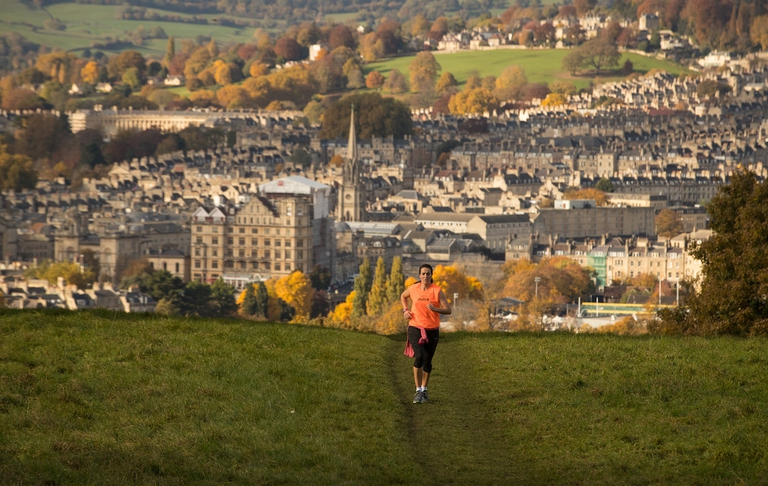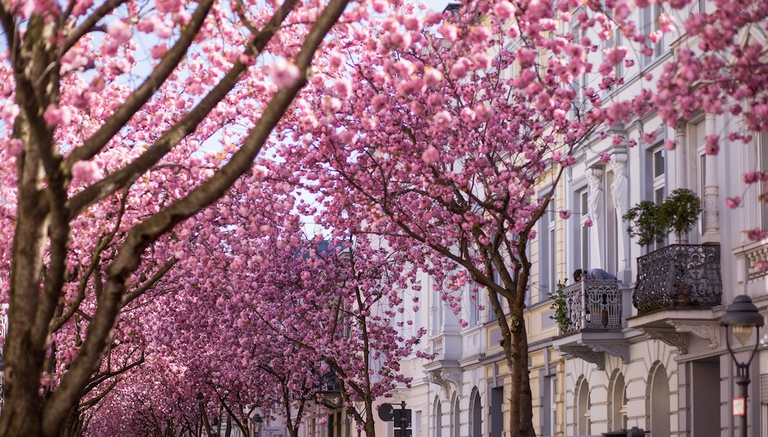
The Amazon became an alternative classroom during the pandemic. Now, the educational forest in Batraja, Bolivia, lives on to teach children and adults the value of nature.
Urban forests are the local answer to global problems. The benefits are numerous and affect many areas such as the climate, biodiversity, health, tourism.
It’s vital to invest in green areas in order to make cities more sustainable, resilient, healthy and enjoyable places. Even more so if we consider the fact that over half of the world population lives in urban areas, a number that will rise to 70 per cent by 2050. Last March, on the International Day of Forests held on the 21st of March, the Food and Agriculture Organisation (FAO) insisted on this issue, illustrating the way forward to “reinvent” cities. Josè Graziano da Silva, director general of the United Nations agency, reminded us that, “well managed forests and trees in and around cities provide habitats, food and protection for many plants and animals, helping to maintain and increase biodiversity“.
Even though cities occupy only three per cent of the Earth’s surface, they currently consume 78 per cent of the total energy used in the world. They’re also responsible for 70 per cent of global greenhouse gas emissions. Therefore, urban spaces are an important starting point to make changes with a positive impact not only on their populations but also in the fight against global warming.
Urban Forestry has the aim to tackle the effects of Climate Change in urban contexts promoting projects that are based on the presence of nature.
LifeGate #UrbanForestry#WorldForumonUrbanForests#WFUF2018 https://t.co/opXUxw3P9U
— Stefano Boeri Architetti (@boeriarchitetti) 8 ottobre 2018
The World Forum on Urban Forests (WFUF) will take place in the Italian city of Mantova from the 28th of November to the 1st of December, gathering representatives of national and local governments, research and academic institutions, non-governmental organisations, urban planners, forest managers, landscape architects, designers and professionals from many other fields. The objective is to exchange experiences and discuss possible long-term collaborations to develop urban forestry strategies to plan a greener, healthier and happier future.
World Forum on Urban Forests 2018: for a greener, healthier and happier future! Join us in #Mantova from 28 November to 1 December 2018. Learn more: https://t.co/yCV5TPa3j9#wfuf2018 #GiornataMondialedellAmbiente #WorldEnvironmentDay @boeriarchitetti @FAOnews @polimi #SISEF pic.twitter.com/bVa49sx9yE
— Città di Mantova (@cittadimantova) 5 giugno 2018
Speakers from the world’s most prestigious universities will be attending, including: Harini Nagendra (India), Richard Weller (United States), Terry Hartig (Sweden) and Sylvie Nail (France), as well as the Italians Stefano Boeri – architect who launched an international call in favour of urban forestry –, Francesco Ferrini and Giovanni Sanesi. “Wooded areas and trees have many important roles in cities and their suburbs – the United Nations underlines –. They absorb CO2, contribute to the elimination of polluting agents, they’re a source of nutrition, improve energy and hydrological safety, restore degraded soil, and prevent droughts and flooding.”
But that’s not all: “Trees contribute to mitigating heat waves and the effects of climate change by providing shade and cooling the air in urban areas. If trees are properly arranged around buildings, they can also reduce the need to use air conditioning by 30 per cent. In cold places, they protect houses from the wind and allow for saving from 20 to 50 percent of the energy needed for heating”.
Read more: Planting Healthy Air, the study showing that trees planted in cities can save lives
Members of C40, a network of 96 global cities committed to defending the climate, are well aware of this. These urban areas represent 25 per cent of the global Gross Domestic Product and one twelfth of the Earth’s population. Beijing is one of the major cities that is part of this network and launched the greatest reforestation programme in its history in 2012. Many industries were moved just outside the city in order to make space for new trees. This is an attempt to make green areas reach 42 per cent of the total urban sprawl.
Similarly, the Kenyan capital Nairobi has decided to protect the Karura forest thanks to the pressure of local communities. Urban expansion reached wooded areas a long time ago, sacrificing them to make space for real estate projects: environmentalist Wangari Maathai led a campaign to save the area. Ecologists were able to reach their objective thanks to citizens’ involvement and a strong awareness effort.
The municipality of Lima, in Peru, decided to invest in forests to reduce the risk of natural disasters, specifically landslides caused by earthquakes. “The local population understood that planting trees means reducing hazards, stabilising peaks, preventing rocks from falling and limiting landslides,” the United Nations details. This led to the creation of a 14 hectare park home to 3,500 indigenous trees, irrigated through a system that reuses waste water. The paths and scenery have also turned this park into a tourist attraction: confirming the fact that developing urban forests is a strategy with many positive outcomes.
Siamo anche su WhatsApp. Segui il canale ufficiale LifeGate per restare aggiornata, aggiornato sulle ultime notizie e sulle nostre attività.
![]()
Quest'opera è distribuita con Licenza Creative Commons Attribuzione - Non commerciale - Non opere derivate 4.0 Internazionale.
The Amazon became an alternative classroom during the pandemic. Now, the educational forest in Batraja, Bolivia, lives on to teach children and adults the value of nature.
Our species took its first steps in a world covered in trees. Today, forests offer us sustenance, shelter, and clean the air that we breathe.
Bangladesh suffered widespread damage as a result of Cyclone Amphan. Yet the Sundarbans mangrove forest acted as a natural barrier protecting the country from further destruction, as it has done countless times before.
On top of a 2.4 million dollar compensation, the indigenous Ashaninka people will receive an official apology from the companies who deforested their lands in the 1980s.
The tapir was reintroduced into Brazil’s Atlantic Forest, the country’s most at-risk ecosystem. The species can play a key role in the forest’s recovery.
Forests are home to 80 per cent of the world’s terrestrial biodiversity. This year’s International Day of Forests highlights the urgent changes needed to save them.
After a legal battle that lasted two years, Indonesia’s Supreme Court has revoked the permit to mine for coal in the forests of South Kalimantan in Borneo.
The list of human and animal victims of the Australia wildfires keeps growing – one species might already have gone extinct – as the smoke even reaches South America.
Areas where the FARC guerrilla used to hold power in Colombia have faced record deforestation. Farmers cut down trees, burn land and plant grass for cows. Because, “what else can we do for a living here in the Colombian Amazon”? An intimate report from the heart of the felled forest in Caquetá.









